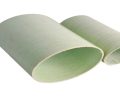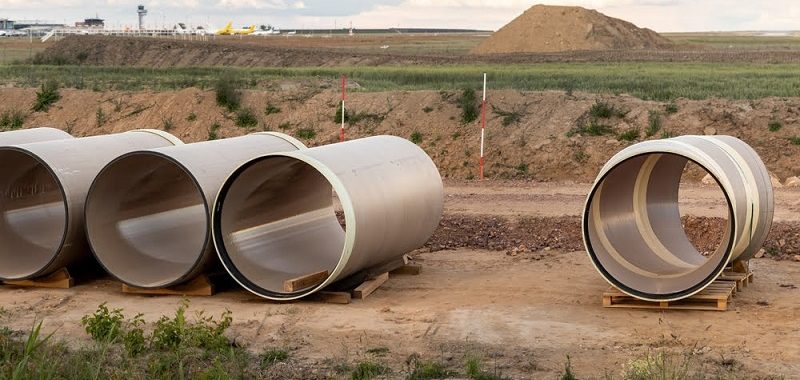
Fiberglass Reinforced Plastic (FRP) pipes are increasingly being recognized for their robustness, resistance to corrosion, and long service life, making them an essential component in various industrial applications, from chemical processing to water distribution. In this context, the use of clear and comprehensive guidelines, such as the CSI specifications FRP pipe, is crucial. These CSI specifications serve as a rigorous framework that ensures all aspects of FRP pipe design, production, and implementation meet consistent quality standards and engineering precision. Adhering to these specifications not only guarantees the optimal performance of FRP pipes in diverse environments but also enhances the reliability of construction and engineering projects in which these pipes are utilized. This ensures that FRP installations sheet are carried out professionally and remain durable over time. A comprehensive guide to navigating CSI specifications FRP pipe for project managers and construction professionals.
What is FRP Pipe?
Fiberglass Reinforced Plastic (FRP) pipe embodies a composite material made of a polymer matrix reinforced with fibers, commonly glass. This result is a lightweight, highly durable, and resistant pipe suitable for various applications. It’s a technological advancement that aligns with the meticulous demands of csi specifications frp pipe in modern construction and engineering projects. The CSI code of FRP (Fiberglass Reinforced Paneling) is 06 83 16.
Description of FRP pipe and its uses in various industries
Chemical Processing Plants
In chemical processing plants, FRP pipes are commonly used to transport aggressive chemicals, acids, and other corrosive substances. Their resistance to chemical corrosion ensures the safety and durability of the piping systems. FRP pipes are designed to handle the chemical attacks that would degrade conventional materials, making them ideal for such demanding applications. This also contributes to lower maintenance costs and longer service life compared to other pipe materials.
Water and Wastewater Treatment
FRP pipes are extensively used in water and wastewater treatment plants due to their resistance to erosion and corrosion. They effectively transport water, sludge, and chemicals in various treatment processes. FRP pipes’ ability to withstand the acidic and alkaline environments typically found in these treatment systems makes them essential for maintaining efficient operations and ensuring environmental protection.
Oil and Gas
In the oil and gas industry, FRP pipes are utilized both offshore and onshore for transporting fluids such as oil, water, and gas. They are commonly found in oil and water injection lines, as well as firewater lines due to their excellent strength-to-weight ratio and resistance to corrosion from chemicals and saltwater. These qualities make FRP pipes ideal for challenging environmental conditions in oil and gas extraction and transportation.
Power Generation
FRP pipes play a critical role in power generation plants, particularly in cooling water lines and flue gas desulfurization systems. Their corrosion resistance ensures that they withstand the harsh conditions of cooling systems, where pipes are constantly exposed to water and heat. Additionally, FRP pipes are used in systems that handle sulfuric acid and other corrosive by-products, contributing to more efficient and environmentally friendly power generation operations.
Marine
FRP pipes are widely used in marine environments for applications such as intake and discharge lines. Their resistance to saltwater corrosion makes them a preferred choice for both offshore and onshore marine operations. Whether transporting seawater for cooling systems or handling waste, FRP pipes offer excellent longevity and reliability in saltwater environments, reducing maintenance costs and improving overall system efficiency.
Pulp and Paper Manufacturing
In pulp and paper manufacturing, FRP pipes are utilized in process water and chemical lines. The manufacturing process involves the use of chemicals that would typically corrode traditional pipes, but FRP pipes resist chemical degradation, ensuring the system’s longevity and efficiency. Their strength and ability to handle high flow rates make them crucial for the transportation of materials and chemicals throughout the production process.
Mining Operations
In mining operations, FRP pipes are used for leachate collection and acid transport lines. They are ideal for handling the acidic and abrasive substances encountered in mining processes, such as transporting leachates from metal extraction processes. The durability and resistance to chemical corrosion in these environments help ensure the pipes maintain structural integrity while minimizing the risk of failure.
Desalination Plants
In desalination plants, FRP pipes are used to carry high-pressure salt and brackish water without the risk of corrosion. As desalination involves the treatment of seawater to produce fresh water, the pipes used in the system must resist the corrosive nature of saltwater. FRP pipes provide a cost-effective and long-lasting solution for these demanding environments, ensuring consistent water flow and reducing the frequency of replacements and maintenance.
Advantages of using FRP over traditional materials
When choosing pipes for various applications, FRP pipes, designed and manufactured in accordance with CSI specifications for FRP pipe, offer numerous advantages over traditional materials such as steel, concrete, or PVC. These advantages make FRP pipes a preferred choice across several industries, providing solutions that enhance performance, safety, and cost-effectiveness.
Corrosion Resistance
One of the most significant advantages of FRP pipes is their exceptional resistance to corrosion. Unlike metals such as steel, FRP pipes do not rust, making them ideal for environments exposed to harsh chemicals, saltwater, and other corrosive substances. This corrosion resistance ensures the longevity of the pipes, reducing the risk of failure and costly repairs that are common with traditional materials like steel and concrete.
High Strength-to-Weight Ratio
FRP pipes have an outstanding strength-to-weight ratio. This characteristic makes them much easier to handle, transport, and install compared to traditional materials such as steel and concrete. Their lightweight nature helps reduce overall project costs by decreasing transportation and installation expenses. The ease of handling also accelerates project timelines, making them ideal for projects with strict deadlines.
Flexibility in Design
Another benefit of FRP pipes is their flexibility in design. Unlike rigid materials like steel and concrete, FRP can be engineered to meet specific strength, stiffness, and size requirements. This flexibility allows for the creation of customized pipe systems suited to the unique demands of the project, whether it’s for water treatment, oil and gas, or chemical processing applications. The ability to tailor the material ensures optimal performance across various environmental conditions.
Durability
FRP pipes are highly durable due to their ability to withstand environmental factors like UV radiation, temperature fluctuations, and mechanical stress. Their resistance to wear and tear ensures a long service life, often extending beyond that of traditional pipe materials. This durability makes FRP pipes a cost-effective investment, as they require fewer replacements and less frequent repairs, contributing to the overall longevity of the piping system.
Lower Maintenance Costs
The corrosion resistance and durability of FRP pipes result in significantly lower maintenance costs. Traditional materials like steel often require periodic inspections, repairs, and replacements due to rust and wear, whereas FRP pipes maintain their structural integrity for much longer. Their resistance to environmental degradation means that they require less attention over the years, allowing for reduced operational disruptions and maintenance budgets.
Leakage Resistance
The seamless construction of FRP pipes plays a crucial role in minimizing the risk of leaks. Unlike traditional pipe materials that rely on joints or welded sections that can be vulnerable to failure, FRP pipes are often manufactured in a continuous form, reducing potential leak points. This makes them particularly effective in preventing leakage in high-pressure systems, ensuring better safety and reliability in fluid transportation.
High Flow Capacity
FRP pipes are designed with smooth internal surfaces that reduce friction and resistance to the flow of fluids. This characteristic is especially beneficial in industries that require high flow rates, as it enhances the efficiency of the system. A smoother surface leads to lower energy losses and less turbulence, improving the overall flow capacity. This is closely related to the FRP pipe roughness factor, where a lower roughness factor contributes to better flow efficiency and reduced energy consumption in pumping systems.
Energy Efficiency
The combination of the lightweight nature of FRP pipes and their high flow capacity leads to enhanced energy efficiency. Since FRP pipes require less energy to pump fluids through them, energy costs associated with the operation of piping systems are significantly reduced. This benefit is particularly important in large-scale industrial systems, where reducing energy consumption can lead to substantial savings over time.
Environmentally Friendly
FRP pipes are often made using sustainable materials and production methods. Their longevity, energy efficiency, and reduced maintenance needs contribute to environmental conservation by minimizing the need for frequent replacements and repairs. Additionally, many FRP pipes can be recycled at the end of their service life, further reducing their environmental footprint. The long-lasting performance of FRP pipes means fewer resources are required for replacements, making them a more environmentally friendly option compared to traditional materials.
Adherence to CSI Specifications
When FRP pipes are designed and manufactured according to CSI specifications, they are guaranteed to meet the highest industry standards. These specifications ensure that the pipes are not only durable and reliable but are also tailored to meet the specific demands of various industries. Whether it’s for high-pressure applications in the oil and gas sector or the transportation of corrosive chemicals in chemical processing plants, FRP pipes that adhere to CSI standards offer superior performance, safety, and efficiency.
Common FRP Standards
- BS 6464 – BS specifications for Reinforced plastic pipes, fittings and joints for process plants
- 41-GP-22 – Canadian specifications for Reinforced Polyester Process Equipment
- ASTM D2996 – Standard Specification for Filament-Wound “Fiberglass”(Glass-Fiber-Reinforced Thermosetting-Resin) Pipe
- ASTM D2997 – Centrifugally Cast “Fiberglass” (Glass-Fiber-Reinforced Thermosetting-Resin) Pipe
- ASTM D1599 – Standard Test Method for Resistance to Short-Time Hydraulic Failure Pressure of Plastic Pipe, Tubing, and Fittings
- ASTM D5421 – Standard Specification for Contact Molded “Fiberglass” (Glass-Fiber-Reinforced Thermosetting Resin) Flanges
- ASTM D3517 – Standard Specification for “Fiberglass” (Glass-Fiber-Reinforced Thermosetting-Resin) Pressure Pipe
- ASTM D5685 – Standard Specification for “Fiberglass” (Glass-Fiber-Reinforced Thermosetting-Resin) Pressure Pipe Fittings
- ASTM D4024 – Standard Specification for Machine Made “Fiberglass” (Glass-Fiber-Reinforced Thermosetting Resin) Flanges
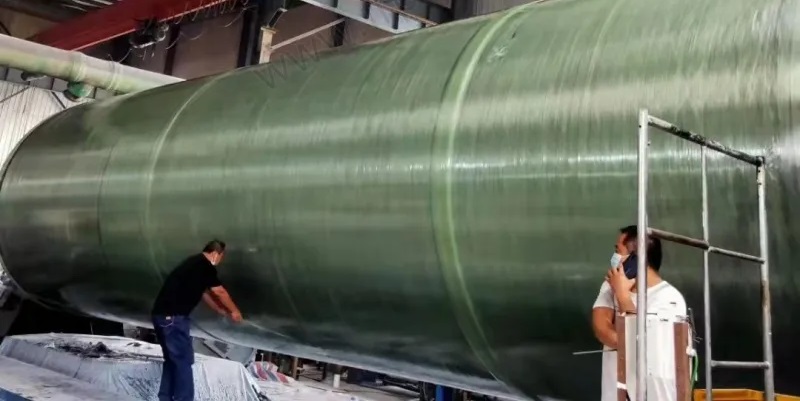
Importance of Support Spacing to Control FRP Pipe Deflection
What is CSI Specifications FRP Pipe
The Construction Specifications Institute (CSI) plays a critical role in the organization and standardization of construction information. Insight into CSI aids professionals in comprehending the nuances of csi specifications frp pipe and other detailed construction elements.
Explanation of the Construction Specifications Institute (CSI)
The Construction Specifications Institute (CSI) is a professional organization that plays a vital role in the construction industry by developing standards and providing resources to improve the efficiency and effectiveness of construction projects. CSI’s focus is on creating a standardized approach to construction specifications and fostering collaboration across various construction disciplines. Here’s an expanded overview of CSI’s key functions:
Diverse Membership
CSI boasts a diverse membership base that includes professionals from various sectors of the construction industry. From architects and engineers to contractors, material suppliers, and consultants, CSI brings together a wide range of expertise and knowledge. This diversity enables the development of comprehensive, practical standards that address the various needs of the construction industry. Members have access to an extensive knowledge pool, helping to create better construction practices, systems, and technologies.
Innovative Tools
CSI is committed to providing innovative tools that help professionals navigate the complexities of construction specifications. Tools like the Project Resource Manual (PRM) offer valuable resources and guidelines for managing construction projects efficiently. Additionally, GreenFormat, a CSI tool for specifying sustainable building materials and practices, supports the growing demand for eco-friendly construction solutions. These tools facilitate informed decision-making, promote sustainability, and enhance the overall quality of construction projects.
Continuing Education
To keep up with the rapidly evolving construction industry, CSI emphasizes continuing education for its members. Through seminars, webinars, workshops, and courses, professionals can stay updated with the latest industry trends, standards, and best practices. This focus on education ensures that construction professionals are well-prepared to meet the challenges posed by new technologies, regulations, and methods in the construction industry. Continuing education also helps members maintain certifications and advance their careers.
Conventions and Workshops
Through its conventions and workshops, CSI provides opportunities for professionals to network, share knowledge, and engage with the latest trends in construction and specification writing. These events feature industry leaders, panel discussions, and hands-on workshops that explore new developments in construction technologies, sustainability practices, and specification writing techniques. Attending these events allows members to deepen their understanding of industry needs while contributing to the development of new standards and innovations.
Document Formats
CSI plays a crucial role in standardizing construction documentation formats. One of the most well-known documents in this regard is the Project Manual, which serves as a comprehensive reference for construction projects. Standardized formats ensure consistency and clarity in project specifications, making it easier for all parties involved in a project—from the design phase to construction and handover—to understand and adhere to the project’s requirements. These standardized formats improve communication and reduce errors during the construction process.
Advancing Technology in Construction
CSI is at the forefront of integrating technology into the construction specifications and documentation process. By adopting digital tools, building information modeling (BIM), and cloud-based platforms, CSI ensures that construction professionals can work more efficiently, with greater accuracy and collaboration. Advancements in technology allow for the real-time sharing of project data, enabling better coordination among team members and stakeholders. As technology continues to evolve, CSI remains dedicated to incorporating the latest digital tools to streamline the construction process.
Standards of Practice
CSI establishes and promotes standards of practice that enhance the overall performance and functionality of construction projects. These standards guide every aspect of a project, from initial design and planning to final execution and handover. By setting clear guidelines, CSI ensures that construction professionals adhere to best practices, ensuring the quality, safety, and sustainability of each project. These standards also help reduce project risks, improve efficiency, and enhance the outcomes for both clients and construction teams.
Cross-Disciplinary Collaboration
One of CSI’s core missions is to foster cross-disciplinary collaboration within the construction industry. By providing a common framework for documentation, such as standardized project manuals and specification formats, CSI encourages better communication and cooperation between architects, engineers, contractors, and other professionals. This cross-disciplinary approach ensures that every aspect of the project is properly coordinated, minimizing errors and streamlining the construction process. By promoting collaboration, CSI helps create more successful projects that meet the needs of clients and stakeholders.
Importance of Standardized Specifications in Construction
Universal Language
Standardized specifications serve as a universal language, reducing the potential for assumptions and errors.
Benchmarking Performance
They enable benchmarking of construction materials and methods, thus helping in continuous improvement of industry practices.
Enhanced Project Coordination
With clear specifications, coordination among multiple project teams becomes more manageable and effective.
Improved Material Handling
They govern material handling and usage, ensuring safety and compliance with best practices.
Risk Mitigation
Standard specifications can significantly mitigate risk by providing detailed guidelines that preempt potential issues.
Sustainability and Efficiency
They are pivotal in facilitating sustainable and energy-efficient building methodologies.
Compatibility and Integration
Standardized specifications aid in ensuring compatibility and integration of different system components within a project.
Informed Decision-Making:
They equip decision-makers with comprehensive information to make informed choices about products and services.
CSI Specifications Division 33 FRP Pipe
The CSI MasterFormat organizes construction specifications by Divisions, with Division 33 focusing on utilities, including specifications for FRP (Fiberglass Reinforced Polymer) pipes.
- Materials and Composition: It defines the acceptable materials and composition for FRP pipes, setting industry benchmarks for quality and durability.
- Size and Strength Requirements: The division specifies the required sizes, strengths, and tolerances, ensuring that the pipes meet the needs of different project scopes.
- Installation Methods: Detailed installation procedures outlined in the specifications contribute to the correct handling and placement of FRP pipes.
- Testing and Inspections: Division 33 mandates testing and inspection protocols that must be followed to ensure compliance with the specified constructs.
- Performance Criteria: It establishes performance criteria for FRP pipes, encompassing aspects such as pressure ratings and flow capacity.
- Handling and Storage: Guidelines for proper handling and storage practices of FRP pipes are included to prevent damage before installation.
- Quality Control: The division requires manufacturers to adhere to strict quality control measures throughout the production process.
- Environmental Considerations: It informs about environmental considerations, such as the impact on potable water systems and resistance to certain soil conditions.
How These Specifications Guide the Installation and Use of FRP Pipes in Projects
- By following the csi specifications frp pipe, installers ensure that the pipes are suitable for the intended application, whether for industrial, municipal, or commercial use.
- Specifications detail jointing methods and the types of adhesives or sealants that may be used, key factors in maintaining the integrity of the piping system.
- The guidelines include how to handle exposure to different temperatures and chemicals, thereby maintaining structural integrity under various conditions.
- Data on proper embedment and backfilling techniques help to prevent FRP pipe failure modes and ensure long-term reliability.
- Specifications also offer direction on accommodations for thermal expansion and contraction, which are critical for FRP pipe installations.
- Finally, clear parameters for the proper gradient and alignment of underground installations are provided, aiding in precision and efficiency.
The Construction Specifications Institute’s guidelines and standards, particularly Division 33, are pivotal for the understanding and correct application of FRP pipes in construction projects. These specifications harmonize the selection, installation, and inspection processes, ensuring that infrastructure is built to last and perform optimally.
Specifications for FRP Pipes
Material
FRP pipes are made from high-strength E-glass and isophthalic polyester resin.
Corrosion resistance
FRP pipes are corrosion-resistant and can be made with a corrosion liner of non-reinforced polyester resin.
Pressure
FRP pipes can be designed for internal pressures ranging from 25–150 PSIG.
Temperature
FRP pipes can operate in temperatures ranging from 15°F (-10°C) to 200°F (93°C).
Manufacturing
FRP pipes can be manufactured using hand lay up, filament winding, or a combination of the two.
Deflection
FRP pipes should meet the strain corrosion resistant requirements of ASTM D3681, with a minimum deflection of 5%.
Jacking rating
FRP pipes should have a minimum straight jacking rating of 300 tons for 36 in.
Electrical conductivity
FRP pipes are non-conductive and suitable for applications where electrical conductivity is a concern.
Adhering to CSI Specifications FRP Pipe
Fiberglass Reinforced Polyester FRP pipes represent a versatile and efficient option in many construction and industrial applications, owing to their notable features such as corrosion resistance, strength, and durability. These pipes are a staple in sectors that demand materials capable of withstanding harsh chemicals, extreme temperatures, and physical stresses. Understanding the specifics of standard csi specifications frp pipe is crucial for anyone involved in the selection, design, or installation of piping systems. This knowledge ensures the optimal performance and compliance of FRP pipes within various projects.
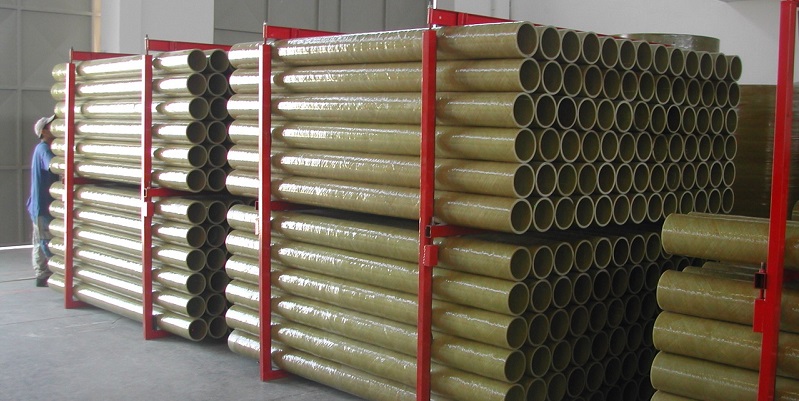
Breakdown of Standard FRP Pipe Specifications
Fiberglass Reinforced Plastic (FRP) pipes are widely utilized for their high corrosion resistance, light weight, long service life, and low maintenance costs. In this section, we will break down the standard csi specifications frp pipe to help engineers and project managers understand their significance.
Resin Types
The choice of resin plays a pivotal role in determining the chemical resistance and temperature tolerance of FRP pipes. Common resin types include:
- Polyester: Offers good mechanical properties and cost-effectiveness, suitable for a broad range of applications.
- Vinylester: Provides enhanced chemical resistance and is ideal for harsh environments.
- Epoxy: Known for its superior mechanical properties and excellent resistance to heat and chemicals.
Structural and Dimensional Requirements
FRP pipes are designed to meet specific structural and dimensional needs:
- Diameter and Wall Thickness: These vary according to application requirements and pressure ratings.
- Length: Typically manufactured in standard lengths but can be customized.
- Fittings and Joints: Must be compatible with the specific type of FRP pipe used to ensure a good fit and prevent leaks.
Importance of Adhering to These Specifications for Project Success
Adherence to csi specifications frp pipe is crucial for the success of any project involving FRP piping systems. Below are seven key reasons why following these specifications is essential:
- Safety: Proper specification adherence ensures that pipes can handle the designed pressure and operational loads without failure, thus protecting property and lives.
- Performance: Correctly specified FRP pipes perform as expected in their intended environment without premature deterioration.
- Compatibility: Specifications ensure that all components of the FRP piping system are compatible, leading to efficient installation and operation.
- Longevity: Adhering to specifications helps in achieving the maximum possible service life of the pipes, reducing the need for frequent replacements.
- Compliance: Many industries are governed by strict regulations that require compliance with established specifications; non-compliance can lead to legal issues.
- Cost-efficiency: Although following specifications might entail a higher initial cost, it prevents expensive repairs and replacements in the future, thereby optimizing the cost over the life of the project.
- Reputation: Successfully executing projects that adhere to recognized specifications enhances a company’s reputation for reliability and technical competence.
It is evident that understanding and implementing csi specifications frp pipe is not just a recommendation but a requisite for ensuring the efficacy, safety, and success of FRP piping systems in any project.
Supporting Documents and Resources for CSI Specifications FRP Pipe
In the realm of construction and engineering, having access to the right documentation is crucial for ensuring all aspects of a project align with industry standards, particularly when working with specialized materials such as FRP (Fiberglass Reinforced Plastic) pipes. This section provides an overview of essential documents that are integral for anyone working with csi specifications frp pipe.
Overview of Essential Documents for Working with FRP Pipes
For effective implementation and compliance with the csi specifications frp pipe, several key documents should be consulted and utilized during the design, specification, and installation phases of projects involving FRP pipes. Here are the most important ones:
Fiberglass Pipe Handbook PDF
The Fiberglass Pipe Handbook is an indispensable resource that covers all aspects of designing and working with FRP systems. This handbook details:
- Material properties and benefits of FRP pipes.
- Guidelines for handling, installation, and maintenance.
- Engineering data including pressure ratings, flow characteristics, and chemical resistance charts.
FRP Pipe Fittings Catalogue
An FRP Pipe Fittings Catalogue is crucial for engineers and installers to understand the various types of fittings available, their dimensions, and compatible uses with different FRP pipes. This catalogue provides:
- Detailed illustrations and descriptions of each fitting type.
- Specifications for pressure ratings and chemical compatibility.
- Installation tips and best practices for ensuring secure and effective connections.
FRP Pipe Catalogue PDF
The FRP Pipe Catalogue offers comprehensive information about the range of FRP pipe sizes, types, and applications. It features:
- Detailed product descriptions with technical specifications like diameter, wall thickness, and resin type.
- Application guides advising on the best uses for different types of FRP pipes based on environmental and operational conditions.
- Reference charts for quick selection of the appropriate pipe according to project requirements.
Best Practices for Ensuring Effective FRP Pipe Cladding
Importance of CSI Specifications FRP Pipe Documents
The significance of the csi specifications frp pipe documents extends beyond mere guidelines for selecting or installing piping systems. These comprehensive documents play a pivotal role in various stages of project planning, execution, and maintenance, ensuring that the inherent benefits of FRP pipes are fully realized. Here’s an in-depth look at why these documents are invaluable:
Ensuring Compliance and Quality
- Standardization: The specifications provide a standardized framework that manufacturers and installers can follow, ensuring consistency in quality and performance across different projects and regions.
- Quality Assurance: By adhering to these specifications, manufacturers can guarantee that their FRP pipes meet high-quality standards, reducing the likelihood of failure or defects that could compromise a system’s integrity or safety.
- Regulatory Compliance: Many industrial and construction projects are subject to strict regulatory requirements concerning material performance and safety. These documents help ensure that FRP piping systems comply with applicable codes and regulations, avoiding potential legal and financial ramifications.
Enhancing Project Outcomes
- Performance Optimization: The detailed guidelines help in selecting pipes with the right properties (e.g., chemical resistance, pressure rating) for specific applications, optimizing the performance and longevity of piping systems.
- Cost Efficiency: By preventing common installation errors and material mismatches, these specifications help avoid costly repairs, replacements, and downtime, contributing to the overall cost efficiency of the project.
- Risk Mitigation: Proper adherence to these standards mitigates risks associated with pipe failures, such as leaks, bursts, and environmental contamination, thereby safeguarding against operational hazards and potential harm to personnel and the environment.
Supporting Sustainability and Safety
- Environmental Protection: FRP pipes are favored for their corrosion resistance and durability, making them suitable for conveying hazardous or corrosive substances with minimal risk of leakage and environmental pollution. Following the specifications ensures that these pipes perform as expected, supporting environmental protection efforts.
- Worker Safety: Correct installation and maintenance of FRP piping systems, as guided by these documents, minimize the risk of accidents and injuries related to pipe failure. This is crucial in ensuring the safety and well-being of workers on construction sites and in facilities using FRP pipes.
- Sustainability: FRP pipes are selected for their long service life and low maintenance requirements. By ensuring that these pipes are produced and installed according to the high standards set out in the specifications, their sustainability benefits are maximized, contributing to the long-term viability and efficiency of projects.
By thoroughly understanding and utilizing these supporting documents and resources, professionals can ensure that FRP piping systems are designed, installed, and maintained correctly, in accordance with the highest standards of the construction industry and csi specifications frp pipe.
FRP Pipe Dimensional Charts (with Inserts) Meeting csi specifications frp pipe
When undertaking projects involving FRP piping, one must strictly follow the csi specifications frp pipe to ensure optimal installation and performance. The FRP Pipe Dimensional Charts, which include informative inserts, are critical tools used for ensuring that the dimensional attributes of FRP pipes match the demands of the project environment and design requirements.
Discussion on How Dimensions are Critical for FRP Pipe Fitting
The dimensions of FRP (Fiberglass Reinforced Plastic) pipes are fundamental to the overall success of a piping system. Accurate dimensions, particularly when designed and manufactured according to CSI specifications for FRP pipes, ensure that all components of the system function harmoniously. These specifications guarantee that the pipes and fittings are compatible, properly aligned, and capable of handling operational pressures. The role of precise dimensions in various aspects of FRP pipe systems is crucial, affecting everything from installation to long-term maintenance.
Compatibility
The most important role of accurate dimensions in FRP piping systems is ensuring compatibility between pipes and fittings. When dimensions are correct, it guarantees that all parts fit together seamlessly, eliminating issues during the installation process. Mismatched pipe and fitting sizes can lead to significant problems such as misalignments, leaks, and system failures. Adhering to strict dimensioning standards ensures that components are perfectly aligned, reducing the risk of these issues and ensuring the smooth operation of the system from the outset.
Pressure Management
Accurate dimensions are vital for the ability of the FRP pipe system to withstand operational pressures. When pipe and fitting dimensions are correct, the strength characteristics of the materials are consistent across all connections. This uniformity ensures that pressure is evenly distributed throughout the system, which helps prevent pipe failures or leakages at connection points. Misalignment or incorrect sizing can cause weak spots where pressure is concentrated, potentially leading to system failure. Proper dimensional integrity ensures that FRP pipes can handle the expected operational pressures without compromise.
Efficiency
Correct dimensions also play a significant role in the overall efficiency of the FRP piping system. Pipes and fittings that fit properly create tighter, more secure connections, minimizing the risk of leaks and reducing friction loss within the system. When leaks occur, they waste valuable resources and reduce the system’s operational efficiency. Properly sized fittings and pipes optimize the flow of materials through the system, contributing to the overall effectiveness and sustainability of the pipeline.
Installation Smoothness
The accuracy of dimensions directly affects the ease and efficiency of the installation process. When the dimensions are precise, the assembly of the piping system becomes much smoother, as all parts fit together without the need for additional adjustments or modifications. This not only saves time during installation but also minimizes the risk of errors, which can lead to costly delays or additional labor. Having precise dimensional specifications from the start ensures that the installation process is fast, efficient, and cost-effective.
Structural Integrity
Properly dimensioned FRP pipes and fittings contribute significantly to the structural integrity of the entire piping system. When all components are accurately sized, the entire system can withstand varying operational conditions, such as changes in temperature, pressure fluctuations, or mechanical stress. Dimensional accuracy ensures that the pipe connections are secure and that the system remains durable over time. Without proper dimensions, stress points and weak connections could lead to early failure of the piping system, costing time and money in repairs or replacements.
Maintenance Reduction
One of the long-term benefits of using correctly dimensioned FRP pipes is reduced maintenance. Accurate fitments result in fewer adjustments and repairs throughout the system’s lifespan. Systems that are properly installed with precise dimensions tend to require less upkeep, as the risk of leaks, misalignments, and pressure-related issues is minimized. Over time, this reduction in maintenance needs results in lower operating costs and extended service life for the piping system.
FRP Pipe Dimensions Chart PDF
The FRP Pipe Dimensions Chart PDF is a vital resource, facilitating the acquisition and application of essential data:
- Easy Access: Readily available for all project team members, ensuring unified references.
- Detailed Specifications: Includes comprehensive listings of size, diameter, wall thickness, and pressure ratings.
- Broad Application: Useful across various types of projects, whether industrial, municipal, or environmental.
- Quick Reference: Allows for rapid validations and cross-checking during both planning and installation phases.
- Updated Standards: Reflects the latest industry standards and advancements according to csi specifications frp pipe.
- Customizable Inserts: Contains inserts that can be tailored for specific project needs, detailing custom fitting and data points.
FRP pipe o.d. chart (Outside Diameter Chart)
The FRP Pipe O.D. Chart is another crucial component provided under the csi specifications frp pipe:
- Scaling and Sizing: Ensures the pipe’s external diameter fits with external components like clamps and supports.
- Integration Capability: Facilitates the integration with existing piping systems by providing exact O.D. measurements.
- Material Optimization: Helps in selecting the appropriately sized materials to avoid excessive material use.
- Installation Accuracy: Critical for proper sealing and alignment during the installation process.
- Preventative Measure: Aids in preventing the mismatch that could lead to system failure.
- Regulatory Compliance: Ensures all dimensions meet specific regulatory and safety standards.
FRP Pipe Thickness Chart
The FRP Pipe Thickness Chart is essential for determining the adequate wall thickness required for various operational demands:
- Pressure Adaptability: Thickness varies with the pipe’s application pressure needs, ensuring durability.
- Corrosion Allowance: Accounts for potential corrosion, suggesting thickness that extends the lifecycle of the pipe.
- Mechanical Stress Handling: Ensures the pipe can handle both internal and external mechanical stresses.
- Temperature Fluctuations: Adequate thickness helps withstand temperature changes that might otherwise compromise pipe integrity.
- Customization Options: Offers options for customization based on specific environmental and operational conditions.
- Cost Efficiency: Helps project managers control costs by selecting the right thickness for required durability without over-specification.
Adhering precisely to the csi specifications frp pipe while utilizing the FRP Pipe Dimensional Charts (with Inserts) not only optimizes the engineering process but also enhances the integrity, efficiency, and longevity of the FRP piping systems.
FRP Pipe Performance Charts in Accordance with csi specifications frp pipe
To ensure FRP piping systems are designed and installed to meet the highest level of performance standards, engineers and project managers rely on detailed FRP Pipe Performance Charts. These charts are an indispensable tool for aligning with csi specifications frp pipe, offering a comprehensive overview of performance metrics that influence the selection and application of FRP pipes in various environments.
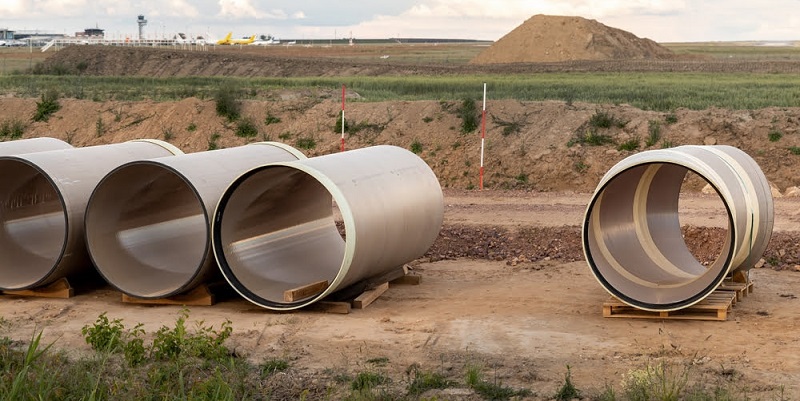
Analyzing Performance Metrics Found in Charts
Performance metrics encapsulated within these charts offer deep insights into the FRP pipes’ capabilities and limitations, enabling informed decision-making:
- Pressure Ratings: Indicate the maximum pressure FRP pipes can safely handle, critical for high-pressure applications.
- Temperature Range: Provides the operational temperature ranges, ensuring material stability in varying environmental conditions.
- Flow Rates: Helps in determining the optimal pipe diameter for intended flow rates, optimizing system efficiency.
- Chemical Resistance: Charts detailing chemical resistance assist in selecting pipes for transporting corrosive substances.
- Abrasion Resistance: Crucial for applications where the pipe’s interior may be eroded by the material flow.
- Impact Resistance: Ensures the pipe material can withstand physical shocks, a necessary characteristic in many industrial settings.
FRP Pipe Weight Chart
Adhering to csi specifications frp pipe, the FRP Pipe Weight Chart is invaluable for project planning and execution:
- Ease of Handling: Lighter pipes are easier to install but must balance strength requirements.
- Transportation Costs: Weight impacts logistical costs; lighter pipes could offer savings.
- Installation Requirements: Identifies the need for specialized equipment based on the pipe weight.
- Support Structures: Determines the type and spacing of support structures needed to ensure safety.
- Longevity and Durability: Correlates weight with material density, impacting longevity and resistance to external pressures.
- Environmental Impact: Lighter weight can mean less raw material usage, contributing to sustainability goals.
Best Practices for Installing FRP Pipe Bridge on Industrial Systems
Interpretation and Practical Use in Planning and Installation
The practical application of information from FRP Pipe Performance Charts is vast, impacting every stage of a project:
- Material Selection: Guides the selection of FRP pipe materials to meet specific operational demands.
- Design Accuracy: Provides the data necessary for designing efficient systems that adhere to csi specifications frp pipe.
- Cost Efficiency: Assists in budgeting accurately for materials, labor, and equipment by providing detailed performance data.
- Regulatory Compliance: Ensures the FRP piping system meets all applicable standards and regulations.
- Safety Margins: Helps establish safety margins by understanding the limits of the piping material in various conditions.
- Future Proofing: Allows for the planning of systems that not only meet current demands but are capable of adapting to future needs.
The FRP Pipe Piles Performance Charts serve as an essential guide for anyone involved in the design, selection, and installation of FRP piping systems. By closely following the insights provided by these charts, professionals can ensure their systems meet all necessary criteria for performance, safety, and compliance under the csi specifications frp pipe, leading to successful project completions.
FAQs about CSI Specifications FRP Pipe
The Construction Specifications Institute (CSI) MasterFormat is a standard for organizing specifications and other written information for commercial and institutional building projects in the U.S. and Canada. FRP (Fiberglass Reinforced Plastic) Pipes fall under various CSI codes, depending on their application. However, the most directly relevant code is typically found under Division 22 00 00 – Plumbing, specific to water and wastewater utilities, which might be further detailed in subcategories for specialty plumbing systems. Given that FRP is used in a variety of applications from chemical processing to sewer and water lines, consulting the specific project specifications can further clarify its classification. Remember, the CSI codes are intended to streamline the construction process by standardizing the organization of documents and specifications. This aids in ensuring all project stakeholders are aligned under a common system, facilitating clearer communication and project efficiency.
The ASME (American Society of Mechanical Engineers) provides codes and standards for the design, manufacturing, and installation of various piping systems, including FRP. The most relevant ASME standard for FRP piping is ASME RTP-1, “Reinforced Thermoset Plastic Corrosion-Resistant Equipment.” This standard outlines criteria for the design, fabrication, and inspection of fiberglass-reinforced plastic (FRP) vessels and equipment, which indirectly applies to FRP piping used in corrosion-resistant applications. Additionally, ASME B31.3, the Process Piping Code, can apply to FRP piping within the chemical and refining industries, provided the materials and construction are in accordance with ASME RTP-1 or other accepted standards. These codes ensure that FRP piping systems are designed and fabricated to high quality and safety standards, suitable for their intended use.
The standards for FRP (Fiberglass Reinforced Plastic) materials and components, including pipes, are developed by various organizations to ensure material quality, safety, and performance. Key standards include:
ASTM D2996 – Standard Specification for Filament-Wound Fiberglass (Glass-Fiber-Reinforced Thermosetting-Resin) Pipe.
ASTM D3517 – Standard Specification for “Fiberglass (Glass-Fiber-Reinforced Thermosetting-Resin) Pressure Pipe.”
ISO 14692 – Petroleum and natural gas industries – Glass-reinforced plastics (GRP) piping.
AWWA C950 – Standard for Fiberglass Pressure Pipe.
These standards cover dimensions, materials, physical properties, and testing procedures for FRP piping systems. They ensure that FRP pipes are made to a high standard, fit for purpose across a variety of applications, from industrial and chemical, to water distribution and wastewater treatment.
The standard size of FRP (Fiberglass Reinforced Plastic) Pipe can vary depending on the manufacturer and the intended application of the piping system. Generally, FRP pipes are manufactured in a range of diameters from about 1 inch to over 12 feet. The lengths of the pipes can also vary, with standard sections typically available in 20, 30, and 40-foot lengths for ease of transport and installation. However, most manufacturers also offer custom sizes to meet specific project requirements. For instance, in water distribution and wastewater applications, larger diameters can be common to accommodate the volume of fluid transport. Always consult manufacturer specifications and relevant standards (like ASTM, ISO, or AWWA) for the most accurate and current information regarding FRP pipe sizes and tolerances.
The absolute roughness of a Fiberglass Reinforced Plastic (FRP) pipe is generally low, making it ideal for applications requiring smooth flow characteristics. For CSI specifications, FRP pipes typically have an absolute roughness of 0.0001 to 0.0002 inches (2.5 to 5 microns). This value is comparable to smooth materials like PVC and is much smoother than metallic pipes like steel or cast iron, which may have roughness values exceeding 0.001 inches.
This smooth interior surface minimizes frictional losses in fluid transport systems, enhancing efficiency and reducing energy consumption. The roughness is consistent over time due to FRP’s resistance to corrosion, scaling, and biological growth, unlike metal pipes that degrade with age. When designing a system under CSI specifications, the low absolute roughness of FRP pipes can be factored into hydraulic calculations, ensuring accurate estimates for flow rates and pressure drops.
FRP pipe stands for Fiberglass Reinforced Plastic pipe, a composite material made by reinforcing a polymer matrix with fiberglass. Under CSI specifications, FRP pipes are widely recognized for their lightweight construction, high strength-to-weight ratio, and superior resistance to corrosion. These characteristics make FRP pipes an excellent choice for applications in chemical processing, water treatment, industrial piping, and wastewater systems.
FRP pipes are manufactured through techniques like filament winding or centrifugal casting, ensuring uniform strength and durability. The polymer matrix often includes resins like polyester, vinyl ester, or epoxy, chosen based on the application’s chemical resistance requirements. For CSI specifications, FRP pipes are valued for their durability, low maintenance, and extended service life compared to traditional materials like steel or concrete. Additionally, their smooth internal surface reduces flow resistance, contributing to system efficiency while meeting stringent performance standards.

As the editor of GangLong Fiberglass, I have years of experience and in-depth research, focusing on cable tray products, fiberglass solutions, and grille systems. I incorporate years of industry insights and practical experience into every content, committed to promoting the progress of the industry. At GangLong Fiberglass, my commitment is reflected in every product, from innovative cable trays to durable fiberglass solutions and sturdy grille systems. As an authoritative voice in the industry, my goal is to provide valuable information to professionals and businesses and promote forward-looking solutions.


